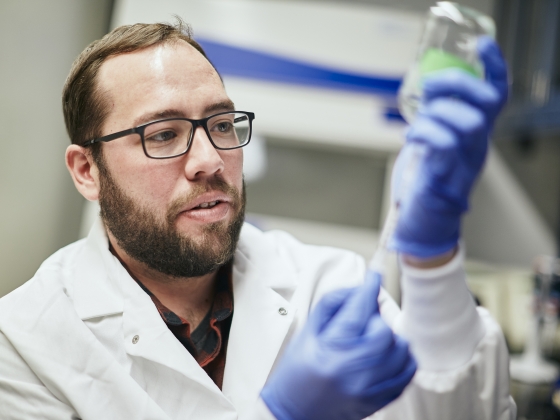-
Yellowstone Hot Spring Supports a Hyperdiverse Microbial Community
March 29, 2019 / Posted by: Miki Huynh
Dan Coleman, assistant research professor in the Department of Microbiology and Immunology at Montana State University, takes samples of microbial cultures. His recent study examines the relationship between microbial diversity and the chemical conditions found in a hot spring in Yellowstone National Park. Image source: MSU / Adrian Sanchez-GonzalezScientist Dan Coleman and his team at Montana State University, supported in part by the NASA Astrobiology Institute team based at the University of Colorado Boulder, have found an impressive abundance of microbial diversity in a hot spring in Yellowstone National Park. This hot spring, Smoke Jumper 3 (SJ3), exhibits extreme chemical disequilibrium due to a mixing of reduced volcanic gases with oxidized surface water.
The research, published in Nature Communications, digs into how and why the fluid mixing allows SJ3 to generate and support a more diverse range of microbial life than other hot springs. The discovery could help astrobiologists in targeting locations out in the universe that may similarly create and support life.
A full press release is available at Montana State University.
Source: [Nature Communications (via MSU)]
- The NASA Astrobiology Institute Concludes Its 20-year Tenure
- Global Geomorphologic Map of Titan
- Molecular Cousins Discovered on Titan
- Interdisciplinary Consortia for Astrobiology Research (ICAR)
- The NASA Astrobiology Science Forum Talks Now on YouTube
- The NASA Astrobiology Science Forum: The Origin, Evolution, Distribution and Future of Astrobiology
- Alternative Earths
- Drilling for Rock-Powered Life
- Imagining a Living Universe
- Workshops Without Walls: Astrovirology